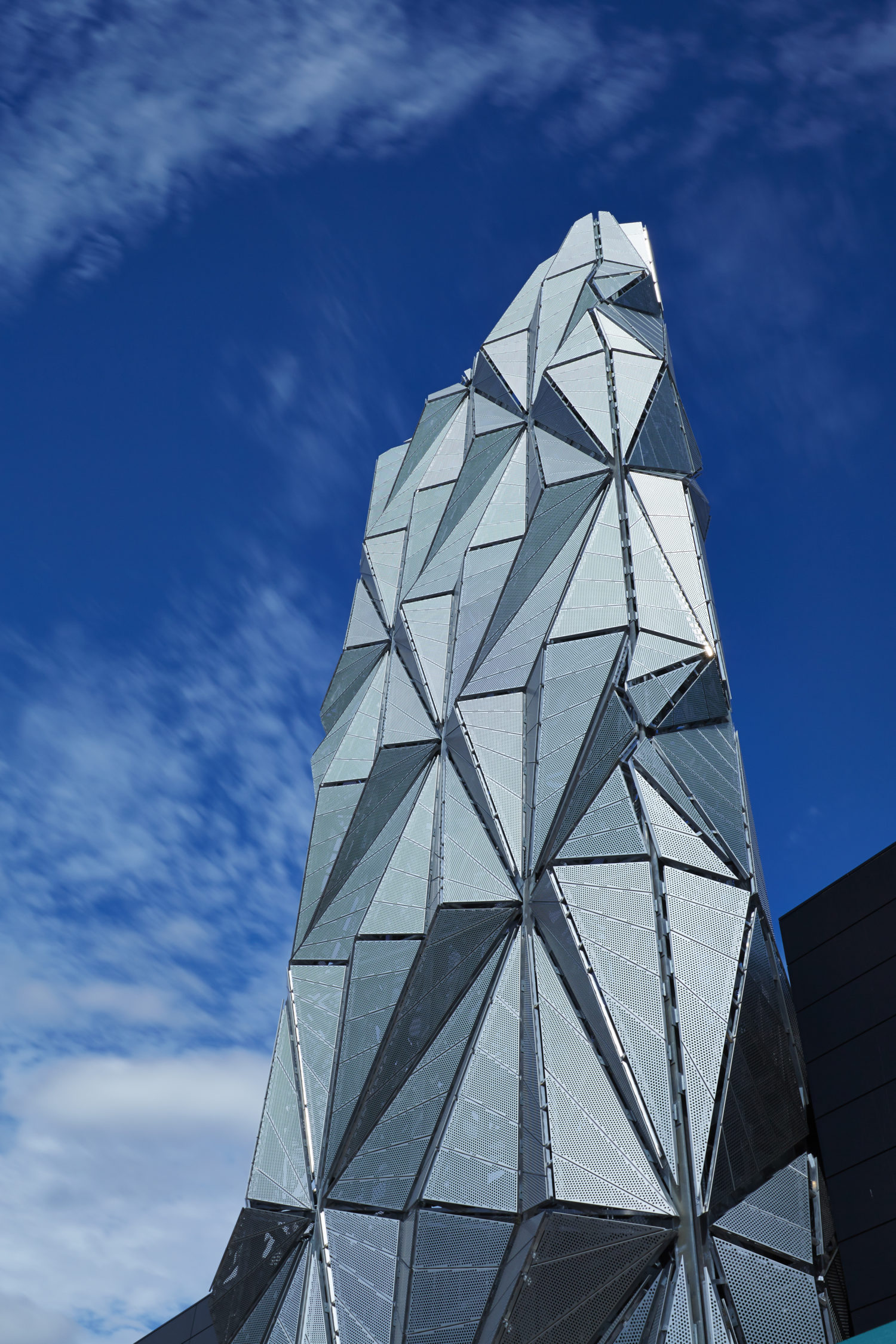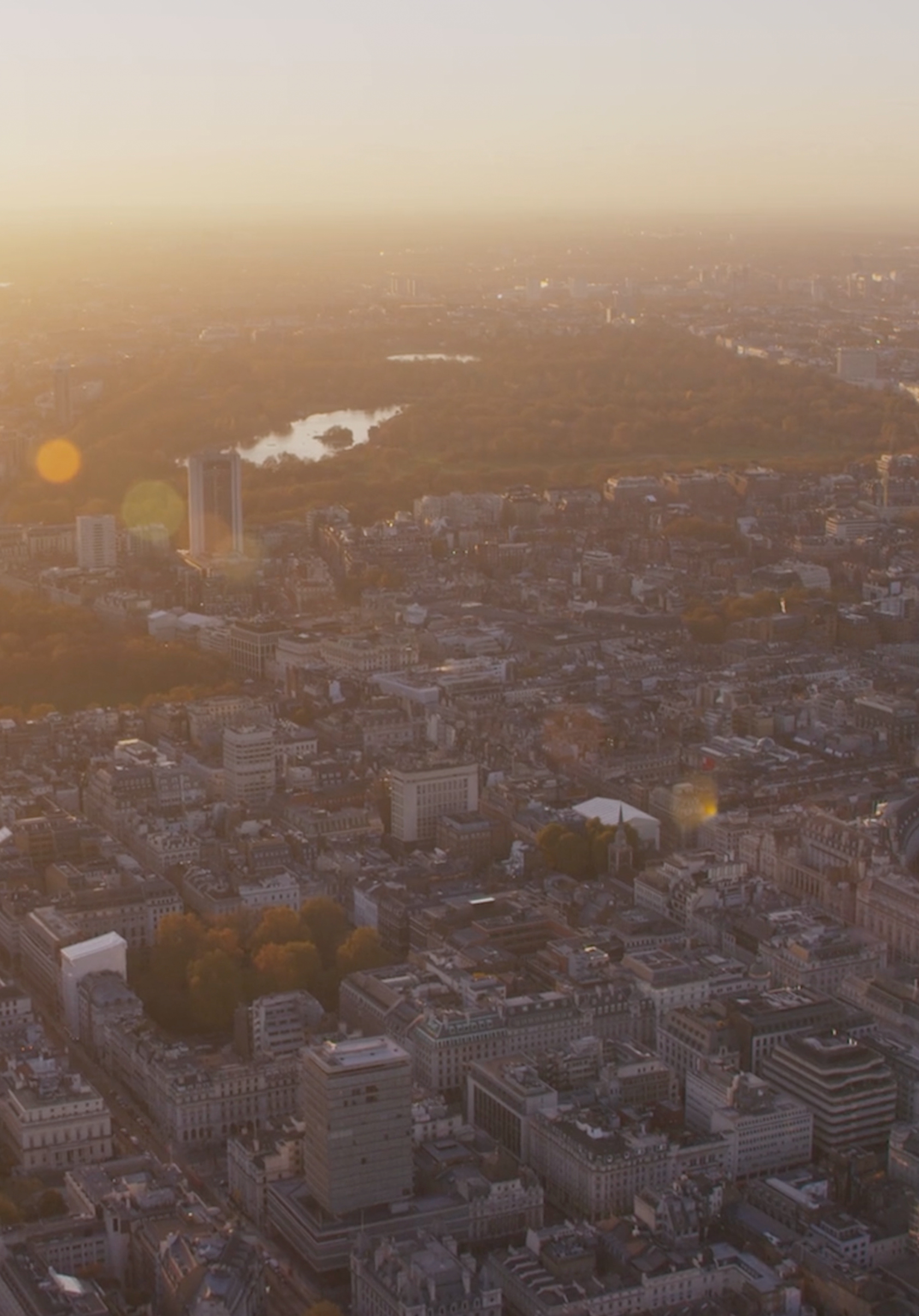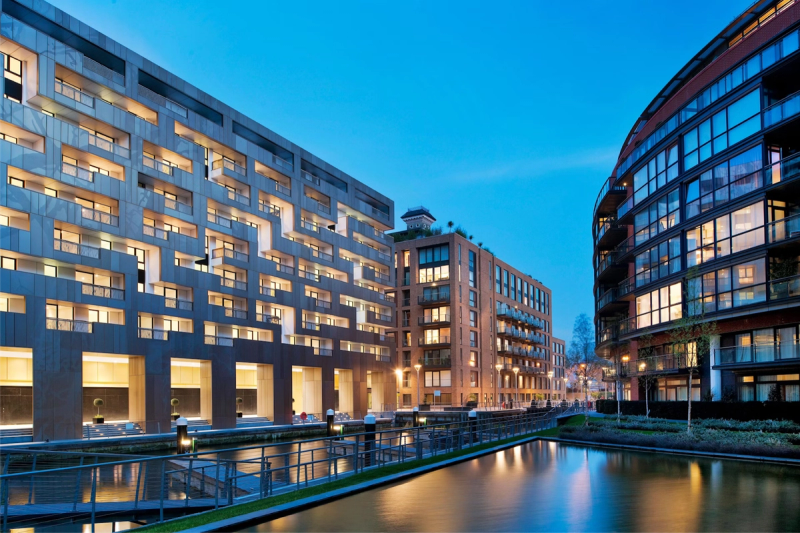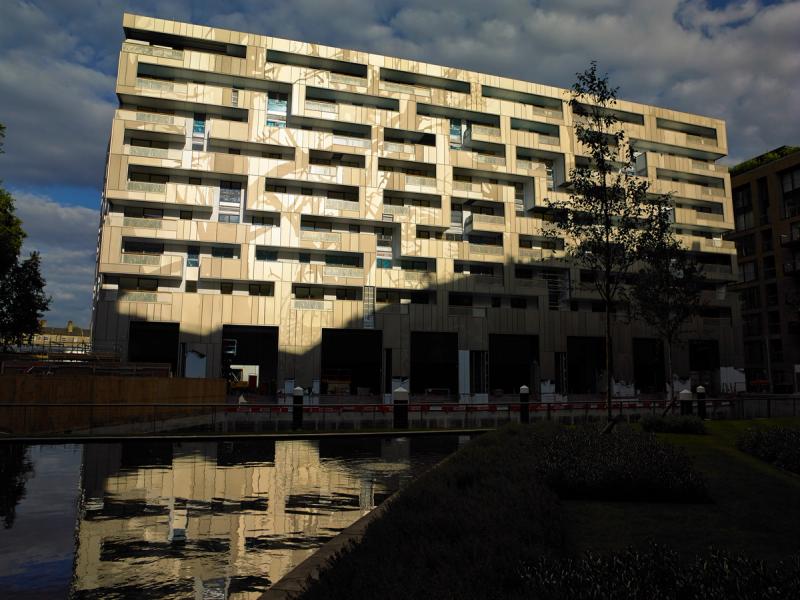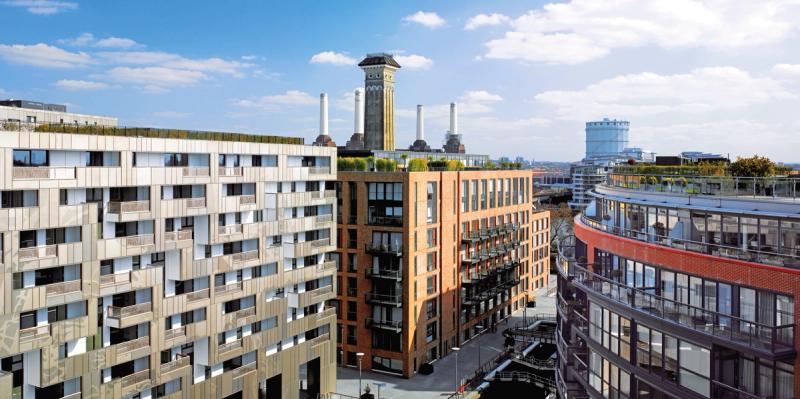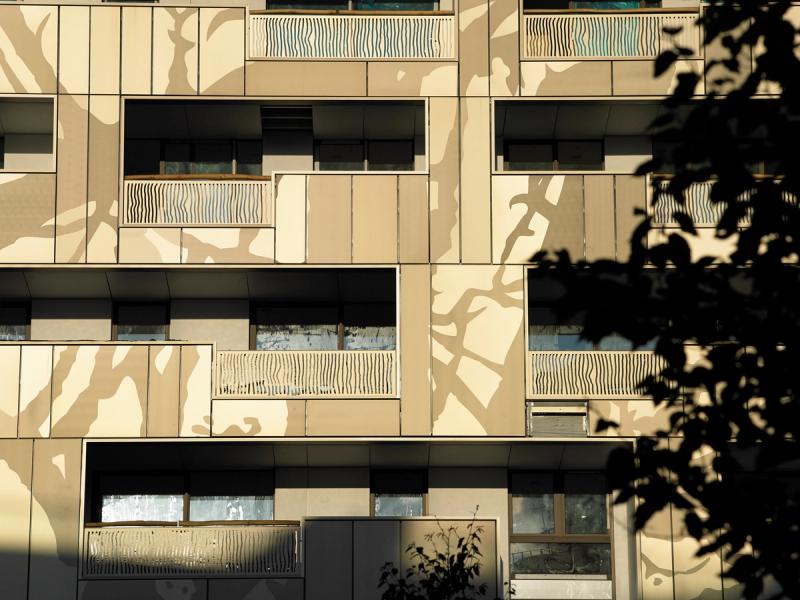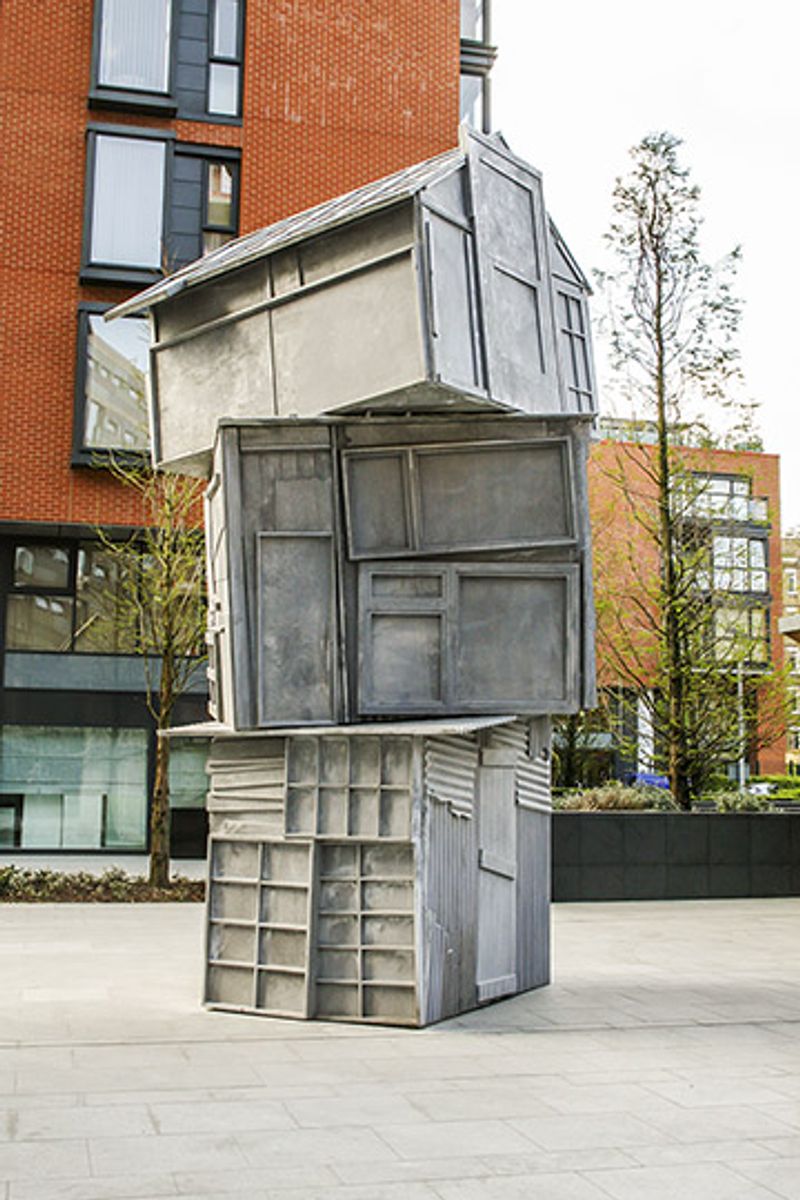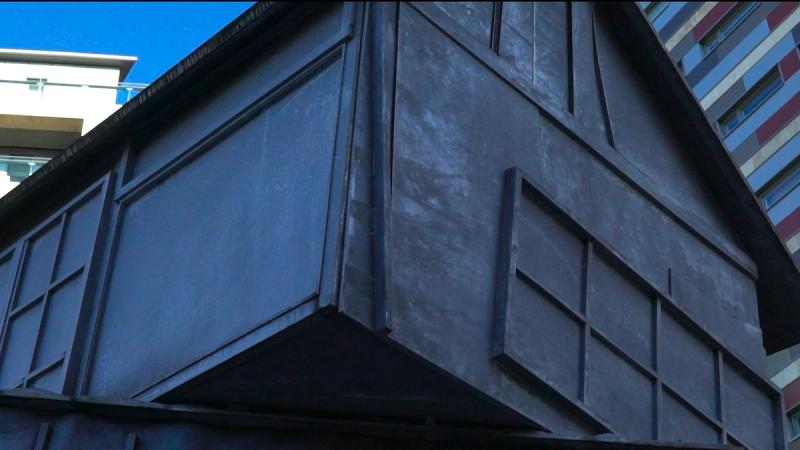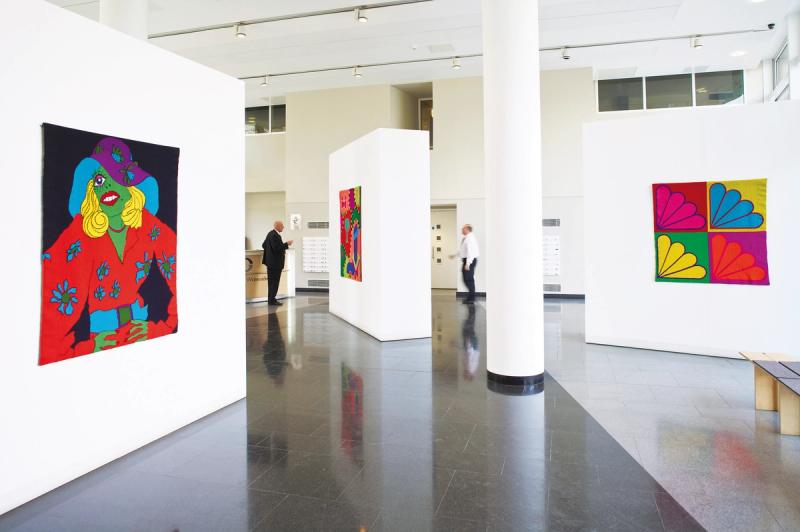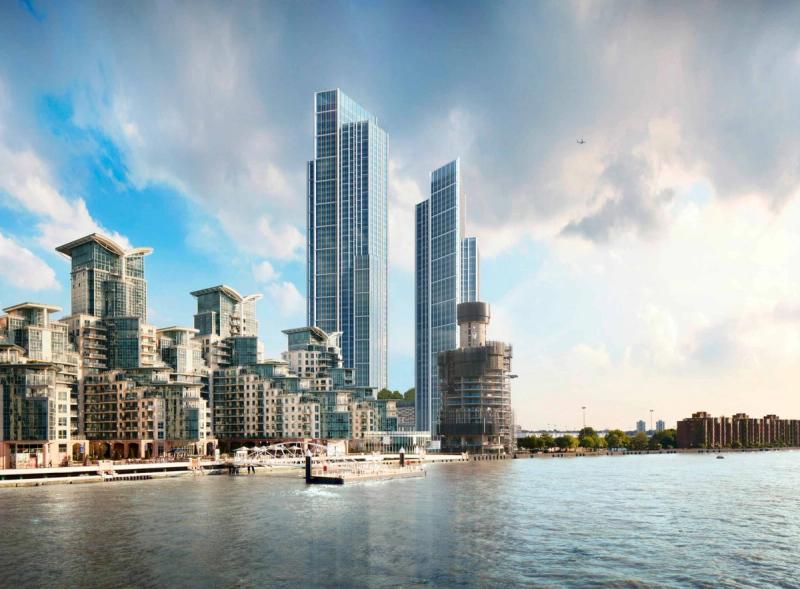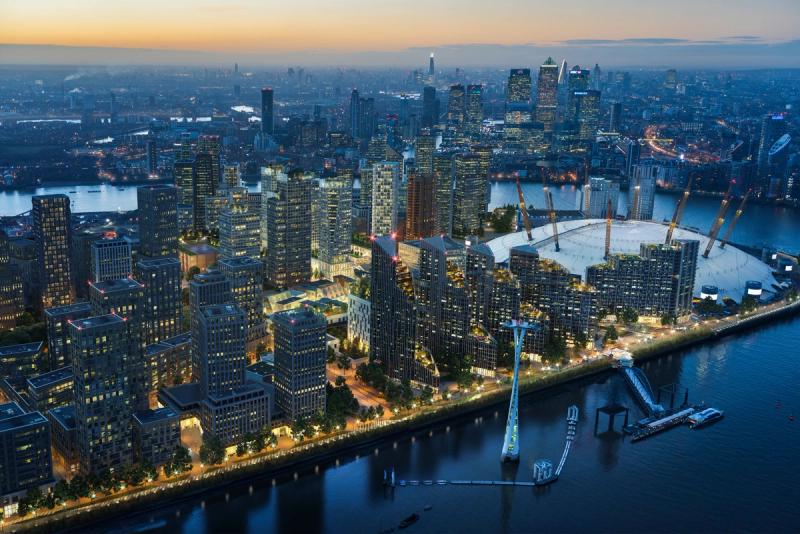Futurecity developed a forward-thinking cultural strategy for St James’ Grosvenor Waterside development situated on the edge of Chelsea and Pimlico, which encompassed a series of embedded art & culture interventions and cultural partnership collaborations.
One of the first cultural partnerships was a collaboration between developer St James, Tate and Thames Clippers, commissioning artist Damien Hirst to develop the livery for the ‘Tate to Tate’ boat service that carried visitors from Tate Britain to Tate Modern along the River Thames.
The strategy also proposed a new cultural partnership between developer St James and Chelsea College of Art and Design, resulting in a new showcase exhibiting space embedded on the ground floor of Grosvenor Waterside. The Chelsea Futurespace gallery hosted a year-round programme of events and workshops from 2006 – 2013, featuring exhibitions for the alumni and staff of Chelsea College of Art and Design.
The strategy set out a public art programme, embedding lead artists into the design process to feed into the design of the landscape, architecture and infrastructure through a site-wide commissioning programme.
The public art programme resulted in a series of public artworks, including:
Bramah House by Claire Woods, a collaboration with Make Architects on the vast aluminium facades of two large private and social residential housing blocks.
Shack Stack by Richard Wilson RA, a sculpture inspired by allotment shed structures that juxtaposes with the contemporary architecture around it.
Thames Stone and Negative Fall by Ekkehard Altenburger, a substantial water feature that extended the dock.
Tate to Tate river boat, designed by Damian Hirst, to transport visitors from Tate Britain to Tate Modern via the River Thames.
